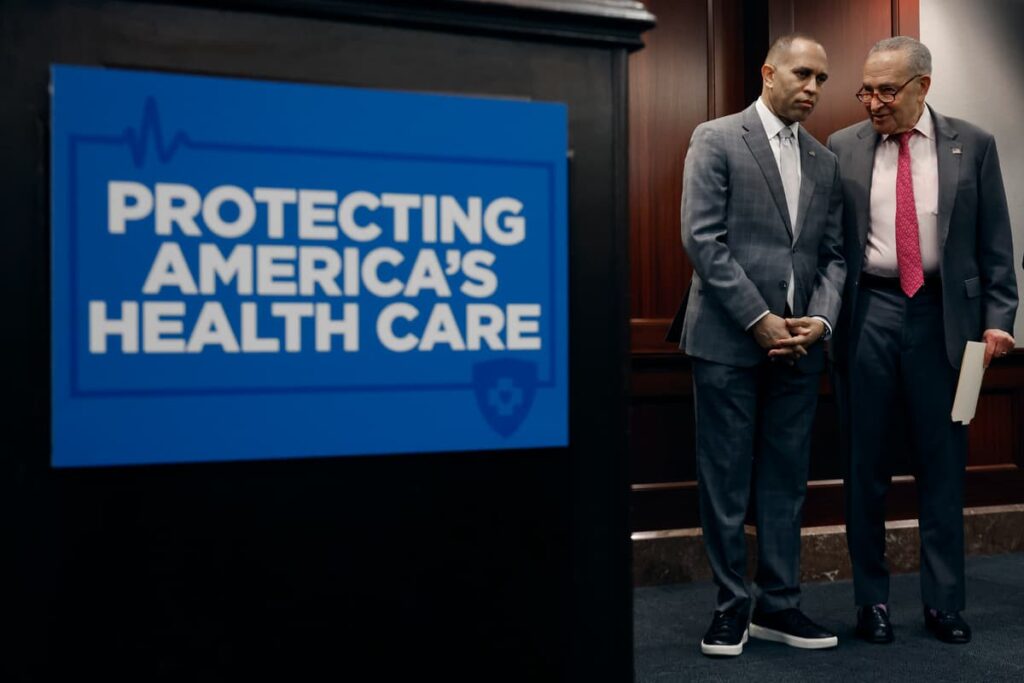
The ongoing budget impasse in the United States has intensified as Democrats push for the permanent extension of certain health care subsidies tied to the Affordable Care Act (ACA), commonly known as Obamacare. Central to the debate is the proposal to solidify the temporary expansion of premium tax credits implemented during the Covid-19 pandemic, which Democrats argue will help lower health care costs. However, critics contend that these subsidies merely mask the underlying issues driving rising health care expenses.
According to estimates from the Congressional Budget Office (CBO), permanently extending the expanded Covid-19 tax credits would cost approximately $410 billion over the next decade, including interest. The total expenditure could reach $488 billion over ten years, directing substantial funds to insurance companies without addressing the true cost of coverage. The rising premiums, which are expected to increase by about 18 percent in 2026 according to the Economic Policy Innovation Center, are attributed to various factors such as escalating medical care costs, a shortage of healthcare professionals, and increasing prices for specialty medications like Ozempic.
Critics argue that these subsidies do not effectively reduce costs; instead, they transfer the financial burden from plan enrollees to taxpayers. The current system dulls consumer pressure to demand better value and leads to significant inefficiencies. In 2024, nearly 12 million individuals enrolled in health exchanges filed no medical claims at all, leading to $35 billion in subsidies being paid to insurers for unused coverage. The issue of improper enrollments is escalating, with projections indicating that around 6.4 million improper enrollments could occur in 2025, costing taxpayers an estimated $27 billion.
The push for the extension of these credits raises important questions about program integrity and the effectiveness of financial assistance. The CBO estimates that the proposed extension would result in an increase of approximately 3.8 million insured individuals by 2035. However, this expansion comes at a high taxpayer cost of roughly $10,000 per newly insured person, which is expected to rise to over $11,500 by 2035. Many of these individuals might already have access to alternative coverage, further complicating the justification for the subsidies.
The implications of these policies extend beyond immediate financial concerns, as they could lead employers to drop job-based insurance plans, pushing workers onto public exchanges. In light of these challenges, some experts advocate for a different approach to reforming health care.
Proposed Reforms to Address Health Care Costs
Several potential reforms have been suggested to more effectively tackle the root causes of high health care costs.
1. **Let the pandemic-era subsidies expire**: Allowing the temporary Covid-19 enhancements to lapse would maintain original ACA subsidies while ensuring that taxpayers continue to cover most premiums for low- and moderate-income enrollees.
2. **Address the underlying drivers of high costs**: This includes modernizing scope-of-practice rules to enable healthcare providers like nurses and physician assistants to work more effectively, implementing site-neutral payments to align billing across various care settings, and expediting the approval process for biosimilar and generic drugs.
3. **Restore integrity to the health exchange system**: Ending automatic enrollments without verification and improving the reconciliation process for advance credits could help recover improper payments and ensure that subsidies are directed to those who truly need them.
4. **Enhance consumer choice and pressure**: Increasing price transparency and expanding access to more affordable insurance options, such as association health plans and short-term renewable policies, could empower consumers to demand better care and pricing.
If lawmakers wish to improve the current health care framework, they should consider reforms that prioritize transparency and cost-effectiveness rather than simply increasing subsidies.
The beneficiaries of the expanded subsidies have often included higher-income households, with some earning over four times the federal poverty level or even reaching the top ten percent of earners in certain states. This raises concerns about the equitable distribution of taxpayer funds and the long-term sustainability of such financial support.
In conclusion, as the government remains in a budget standoff, the focus should shift to effective reforms that genuinely lower health care costs and improve access without deepening the deficit or perpetuating inefficient systems. Continuing to funnel taxpayer dollars into subsidies for insurers, particularly for individuals who do not utilize their coverage, raises critical questions about the future of health care policy in the United States.






